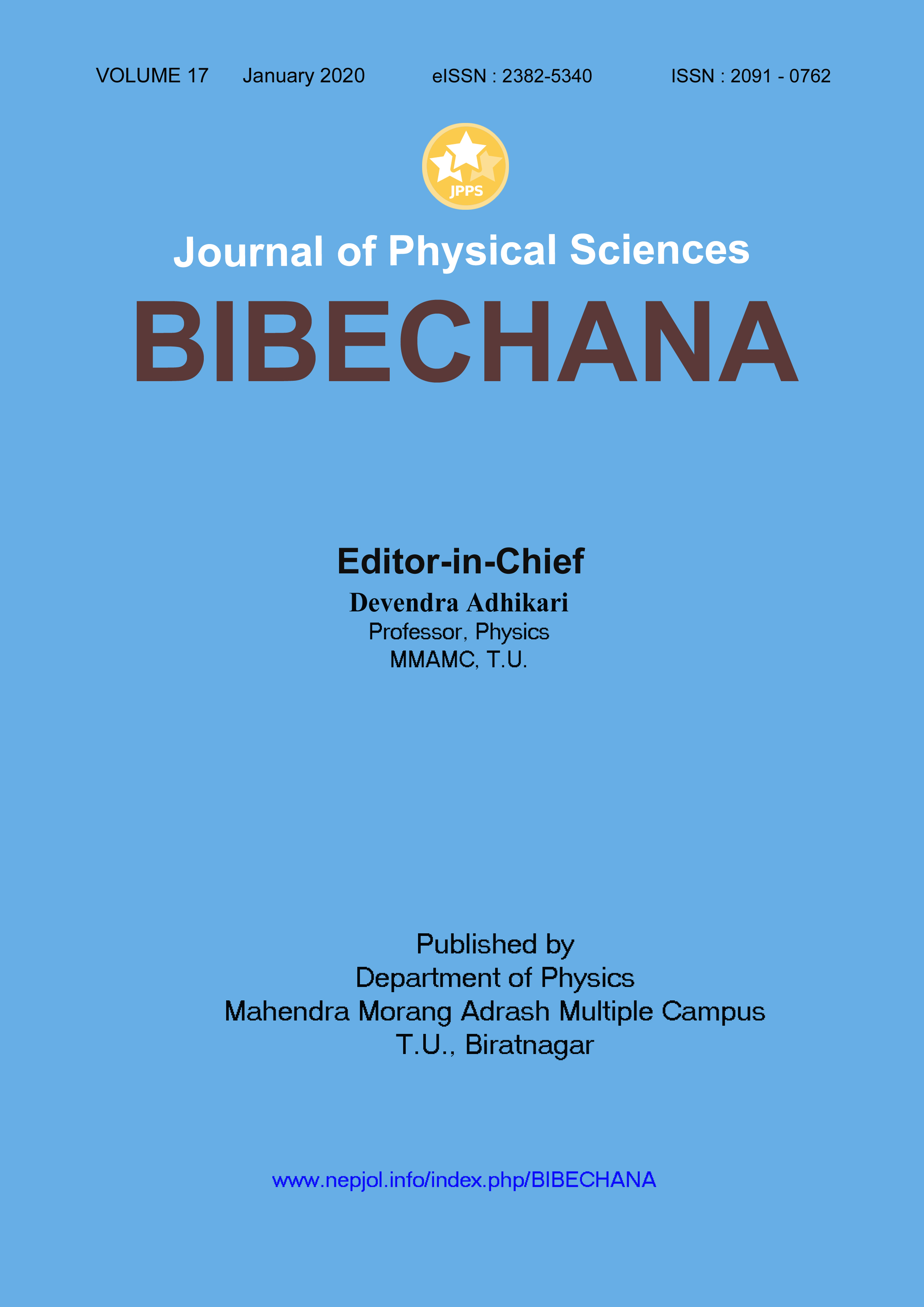Chemical profiling and antioxidant activities of essential oil from rhizomes of Acorus calamus L.
DOI:
https://doi.org/10.3126/bibechana.v17i0.25201Keywords:
Acorus calamus L., DPPH assay, Essential oil, GC-MS, IC50Abstract
Background and Aims: Acorus calamus L. is an indigenous herb in Nepal. It belongs to family Acoraceae and grows in wet land with scented rhizomes. It is also known as Sweet flag in English and commonly as Bojho in Nepal. The present investigation reveals the chemical compositions and antioxidant activity of rhizome essential oil of A. calamus. Methods: Essential oil of rhizomes of Acorus calamus L. from Kaski district, Nepal was extracted by hydrodistillation method and volatile constituents were analyzed Gas chromatography-Mass spectrometry. The antioxidant potential of essential oil was analyzed by 1,1-Diphenyl-2-Picrylhydrazyl (DPPH) scavenging assay. Results: A GC-MS analysis revealed the presence of β-asarone (22.38%), α-asarone (14.97%), 1-(4,6-dimethoxy-2,3-dimethylphenyl ethanone (14.24%), Isoelemicin (5.68%), cis-Methylisoeugenol (4.26%), α-calacorene (4.16%), and other 20 minor components. From DPPH assay, half maximal inhibitory concentration (IC50) value of essential oil was found to be 108.71 µg/mL. Conclusions: These findings have strengthened the A. calamus L. is good source of compounds like β-asarone, α-asarone and can be used as potential antioxidants.
BIBECHANA 17 (2020) 89-95
Downloads
Downloads
Published
How to Cite
Issue
Section
License
This license enables reusers to distribute, remix, adapt, and build upon the material in any medium or format for noncommercial purposes only, and only so long as attribution is given to the creator.




